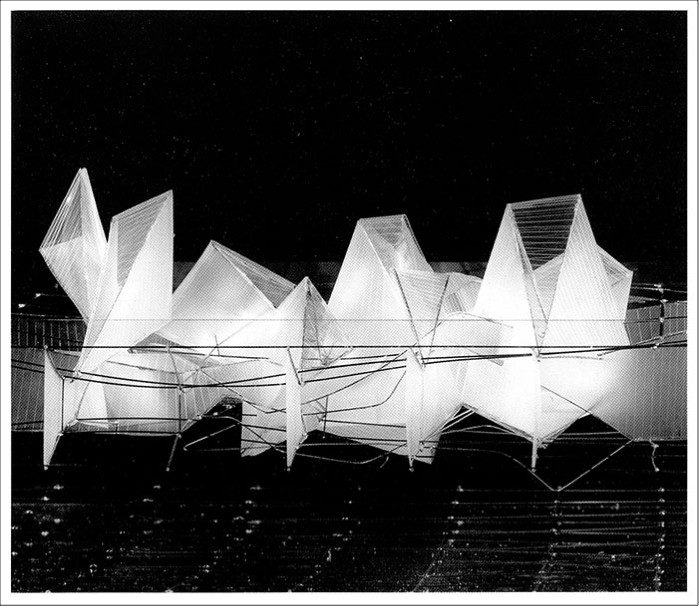
THE VIRTUAL HOUSE
Peter Eisenman
Siteless Ideas Competition
1996
“The virtual is opposed not to the real but to the actual. The virtual is fully real insofar as it is virtual.”
G. Deleuze, Difference and Repetition
In an abstraction of the existing spatial concept of House IV, two cubes are posed side by side to form a field for potential interconnectivity, upon which an abstract machine initiates a differentiating process. This spatio-temporal process of transformation leads to the actualization of the virtual through time and opens architecture to its own indeterminacy. Form is then reread as a manifestation of becoming, rather than a representation of function and meaning. The process of becoming changes the object in space and time, breaking any direct correspondence between real elements and their representation.
The program for the Virtual House begins from the memory of the spatial concept of Peter Eisenman's House IV, for which he wrote an unpublished text in 1987 titled The Virtual House. Here the Virtual House is abstracted into cubes that constitute a potential field of internal relations and conditions of interconnectivity. Each potential connection can be expressed as a vector. Each vector has a field of influence that actualizes its virtual movement through time. This actualization is visualized through the effect of each vector on the lines within its field of influence The lines and their geometric properties become forces. For each vector, attributes were set arbitrarily in order to describe its field of influence. The movements and interrelations were produced by these attributes, which are now seen as constraints that influence the location, orientation, direction, and repetition of any vector within the space. These constraints operate on each other as local forces. Each constraint acts and reacts according to three types of fields of influence - points, orientation, and direction. The condition of each vector is recorded, whether unconstrained or constrained, as a series of traces.
Deleuze writes in Difference and Repetition, "For a potential virtual object to be actualized is to create divergent lines which correspond to - without resembling - a virtual multiplicity". In the Virtual House, the virtual multiplicity is the changing memory of the two cubes, changes due to differences in their interrelations in time.
In addition to rethinking form, in this process the virtual characteristics of simultaneous activating and manifesting point toward an understanding of multiplicity and establish « real » distinctions between the given parts of a whole. One can no longer reduce complexity to simplicity. Contrary to the Cartesian notion of completion, the idea of incompletion is now operative. The continuous desire to realize the virtual generates new possibilities and alludes to another understanding of interrelations and repetitions.
Using the notion of the virtual in making architecture runs the risk of simply and literally materializing the immaterial. Hence one needs to address the productive making of architecture, that is, the condition of the virtual, in order to allow architecture to question traditional judgment. This allows for another working of space that affects both subject and object as architecture continues to become.

peter eisenman, Feints, SKIRA, p.144
Plastic Model
Peter Eisenman, Feints, SKIRA, p.149